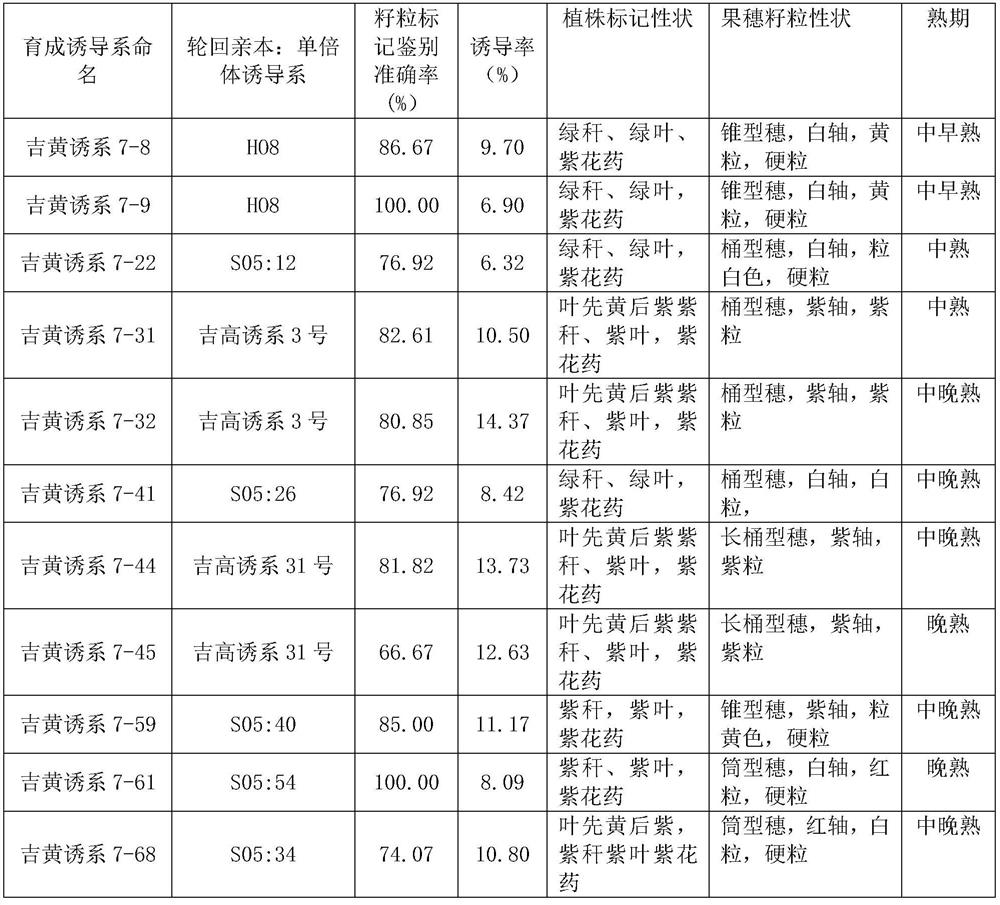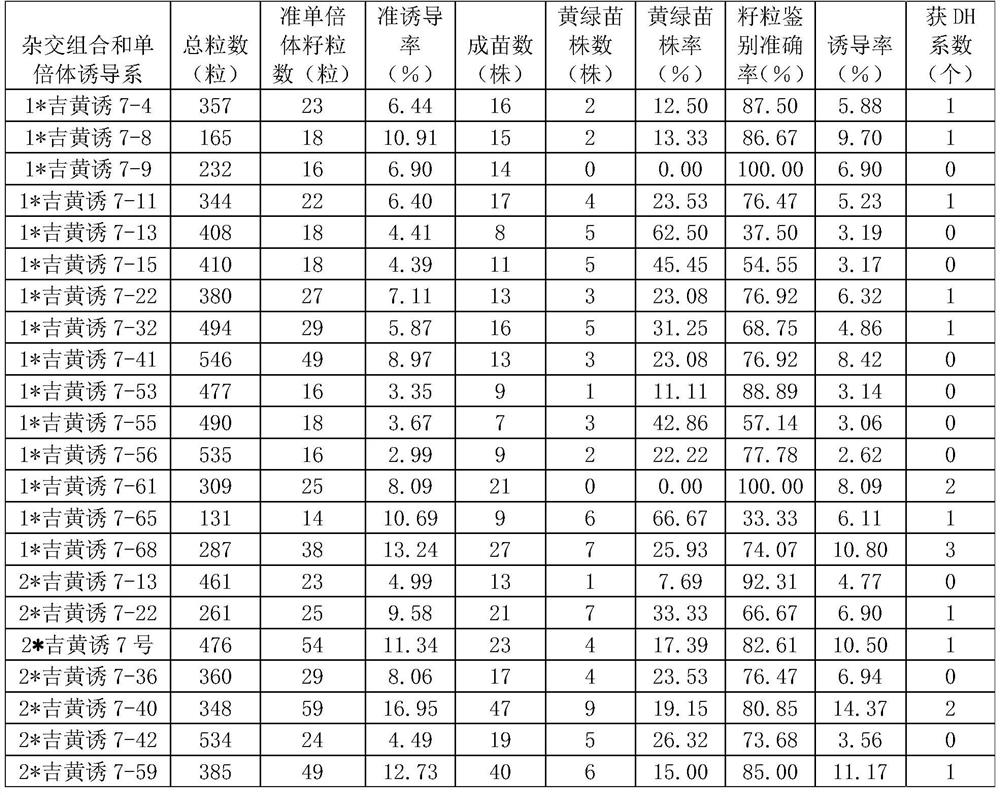A Breeding Method for Inducing Haploid by Using Yellow-green Seedling Marker-Assisted Selection in Maize Hybridization
A haploid induction system and marking technology, which is applied in botany equipment and methods, application, plant gene improvement, etc., can solve the problems of wasting manpower, material and financial resources, and difficulties in haploid identification, so as to reduce manpower and save manpower , the effect of strong reliability
- Summary
- Abstract
- Description
- Claims
- Application Information
AI Technical Summary
Problems solved by technology
Method used
Image
Examples
Embodiment 1
[0042] Example 1 The breeding process of the haploid induced line Jihuangyu No. 7 with yellow-green seedling markers and its sister lines in the present invention.
[0043] (1) The dominant homozygous yellow-green seedling gene material 523DYg3-N1582 was introduced from the United States in 2011 (523DYg3-N1582 is the code name of this material in the American Maize Genetic Resources Collection Center, and the preservation number of this material in the US Department of Agriculture is: MGS 9012023, both available and available free of charge). And other inductive materials from the United States, the code names are: H08, S05:12, S05:26, S05:34, S05:40, S05:54 and S05:60.
[0044] (2) In the summer of 2012, 523DYg3-N1582 (female parent), haploid induction line Jigaoyuxi No. 3 (cultivated by Jilin Academy of Agricultural Sciences) and Jigaoyuline 31 were planted in the Jilin Academy of Agricultural Sciences No. (Cultivated by Jilin Academy of Agricultural Sciences), H08, S05:12,...
Embodiment 2
[0055] Example 2 Experiment of breeding maize inbred lines by hybridization induction with haploid induction lines with yellow-green seedling markers such as Jihuangyu No. 7
[0056] Proceed as follows:
[0057] (1) In 2014, three single-cross F 1 Generations; numbered 1, 2, and 3, respectively.
[0058] (2), in the summer of 2015, in Gongzhuling, Jilin Academy of Agricultural Sciences, the haploid induction lines (see Table 2) with the yellow-green seedling markers such as Jihuangyu No. 7 cultivated in Example 1 are male parents, respectively The F 1 Pollination was carried out in a "one-to-one" manner, and 28 spikes were harvested on the female plant; according to the traits of the grain markers (the grains whose top aleurone layer and germ tip were both purple were eliminated, they were diploid grains obtained by normal hybridization; The aleurone layer at the top is purple, and the tip of the germ is colorless, which is the induced parthenocarpy "quasi-haploid" grain) f...
Embodiment 3
[0069] Example 3: Haploid-inducing lines such as Jihuangyu No. 7 and other haploid-inducing lines were used to induce haploid breeding of hybrids to test DH lines of maize
[0070] Proceed as follows:
[0071] (1), in the winter of 2015, in Nanfan District, Jilin Academy of Agricultural Sciences, Ledong, Hainan, two commercial hybrids of Dika 516 and Syngenta 203 (purchased in the seed market in 2015) were used as the basic population, and the examples were taken The haploid induction line Jihuangyu No. 7 with yellow-green seedling markers bred in 1 or its sister line was used as the male parent, and Dika 516 and Syngenta 203 were used for "one-to-one" single-ear pollination, and the harvest On the ear of the female parent plant, the "quasi-haploid" grain is screened according to the traits of the grain markers that the top aleurone layer is purple and the germ tip is colorless, and the quasi-haploid induction rate of the grain is calculated. The calculation formula is:
[00...
PUM
 Login to View More
Login to View More Abstract
Description
Claims
Application Information
 Login to View More
Login to View More - R&D Engineer
- R&D Manager
- IP Professional
- Industry Leading Data Capabilities
- Powerful AI technology
- Patent DNA Extraction
Browse by: Latest US Patents, China's latest patents, Technical Efficacy Thesaurus, Application Domain, Technology Topic, Popular Technical Reports.
© 2024 PatSnap. All rights reserved.Legal|Privacy policy|Modern Slavery Act Transparency Statement|Sitemap|About US| Contact US: help@patsnap.com










